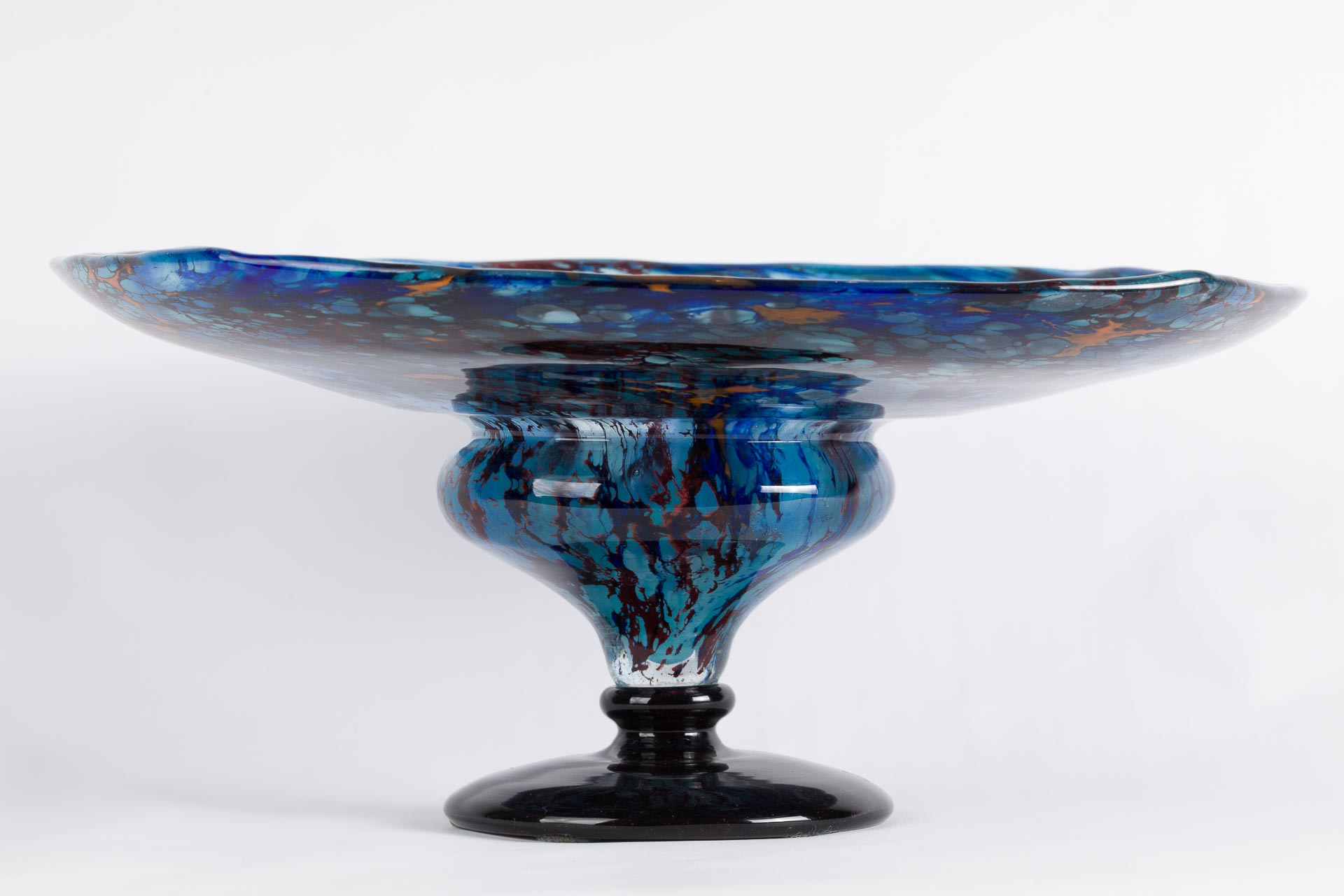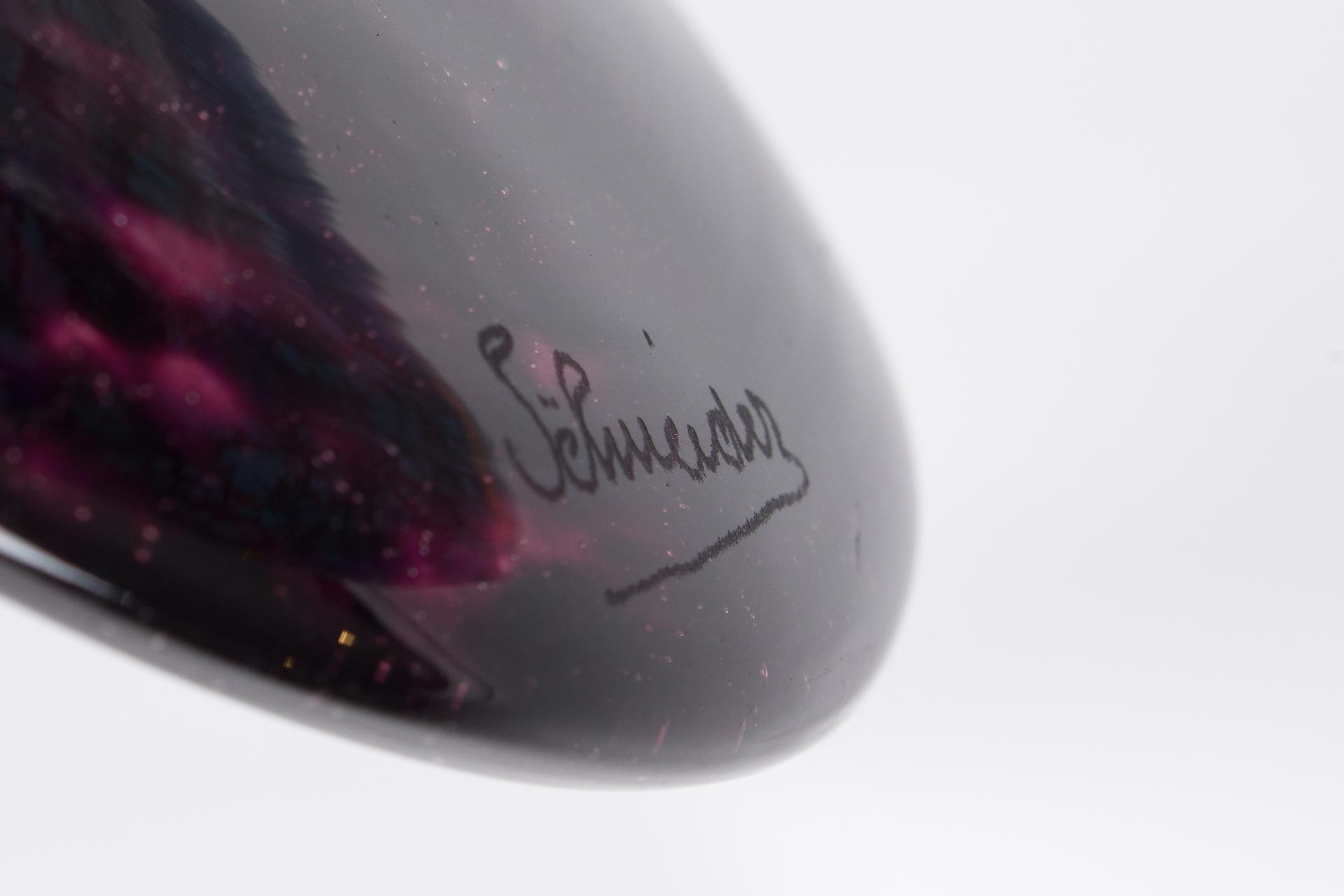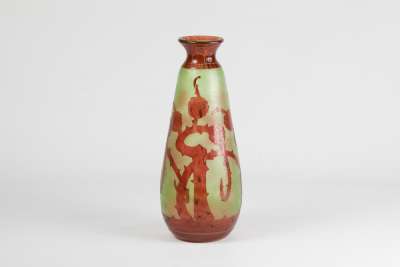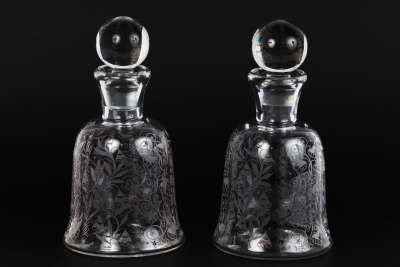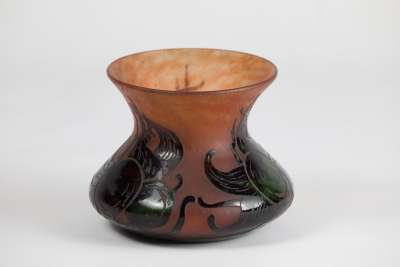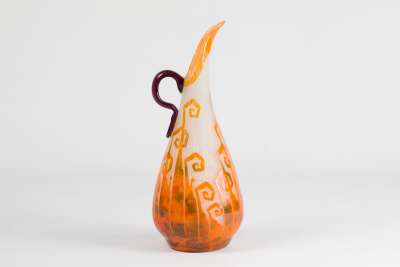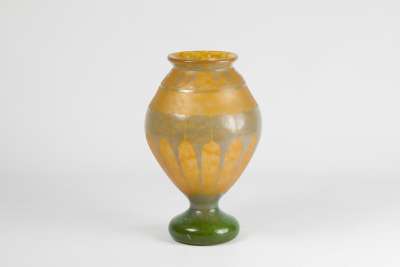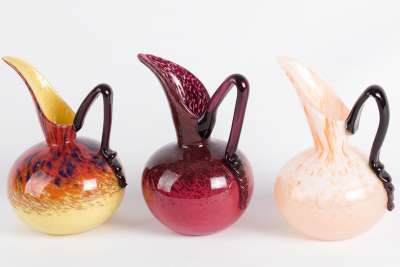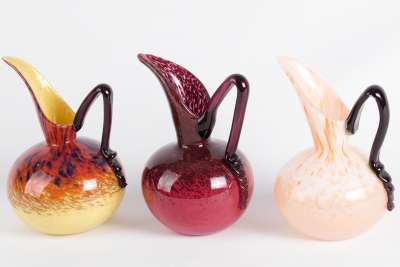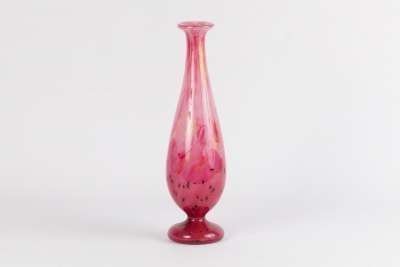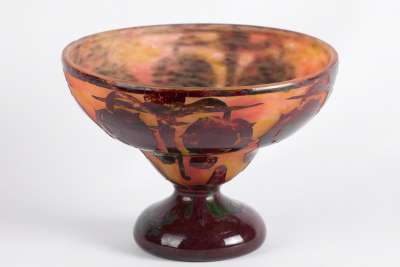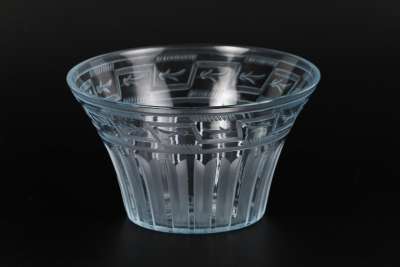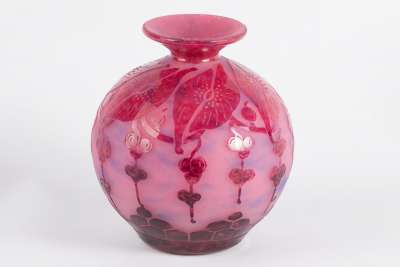The Charles Schneider 'Marbrines' Coupe is a remarkable example of early 20th-century French glasswork. Crafted circa 1920-24, this coupe features a striking combination of azure-blue, dark blue, and orange powdered glass, with a rim elegantly drawn out to four distinct points. The base is adorned with a violet applied section, adding a layer of depth and complexity to the overall design. This piece is signed "Schneider," indicating its authenticity and origin from France, a country renowned for its exquisite glass artistry during this period.
Condition Report
The Charles Schneider 'Marbrines' Coupe is in excellent condition, exhibiting no signs of damage or restoration. The glass surface maintains its vibrant colours and clarity, indicative of careful preservation. The powdered glass technique remains intact, showcasing the intricate blending of azure-blue, dark blue, and orange hues. The applied violet base is securely attached, showing no signs of wear or loosening. The signature "Schneider" is clearly visible, confirming the piece's authenticity and provenance. Overall, this coupe has been meticulously cared for, ensuring its continued elegance and historical significance.
Dimensions
Weight: 4000gm, Length: 38cm, Width: 37cm, Height: 18.3cm.
A Coupe for Decorative Display
The intended use of the Charles Schneider 'Marbrines' Coupe is predominantly decorative, serving as a centrepiece or display item in a well-appointed room. The vibrant colours and unique form make it an eye-catching addition to any collection or interior space, intended to draw admiration and interest. Its substantial weight suggests it was designed for stable placement on a surface, ensuring it remains a focal point of the display area.
Art Nouveau Influences
The design of this Charles Schneider 'Marbrines' Coupe is a fine representation of the Art Nouveau style, characterised by organic forms and vibrant colours. The flowing lines and naturalistic shape of the coupe reflect the movement's emphasis on harmony with nature. The powdered glass technique used in this piece is typical of the period, allowing for a seamless blend of colours that evoke the fluidity and dynamism associated with Art Nouveau. This style was popular in the early 20th century and remains highly sought after by collectors for its innovative and artistic approach to design.
The Techniques of Powdered Glass and Colour Application
The creation of the Charles Schneider 'Marbrines' Coupe involved advanced glassmaking techniques, notably the use of powdered glass to achieve its distinct colouration. This method involves applying finely ground glass powders to the surface, which are then fused during the glassblowing process. The precise control required to blend azure-blue, dark blue, and orange into a cohesive design demonstrates the skill and artistry of the maker. The applied violet base is a testament to the mastery of attaching decorative elements to blown glass, a technique requiring great dexterity and experience.
Crafted by Charles Schneider
Charles Schneider, the creator of this coupe, was a prominent figure in the Art Nouveau and Art Deco movements. His work is distinguished by its bold use of colour and innovative techniques in glassmaking. Schneider's studio was known for producing pieces that combined artistic expression with technical excellence, and this coupe is a testament to his vision and craftsmanship. His signature on the piece not only confirms its authenticity but also associates it with a legacy of high-quality French glasswork that continues to be celebrated in art and design circles.
Sought After by Collectors of Art Nouveau Glass
The Charles Schneider 'Marbrines' Coupe holds significant appeal for collectors of Art Nouveau glass due to its distinctive design and historical context. Pieces from this era, particularly those signed by renowned makers like Schneider, are prized for their artistic merit and innovative use of materials. Collectors are drawn to the vibrant colours and organic forms that typify the Art Nouveau style, making such items highly desirable. This coupe, with its combination of beauty and provenance, represents a valuable addition to any collection focused on early 20th-century decorative arts.

